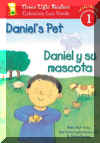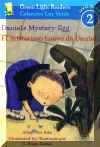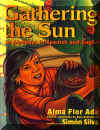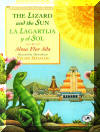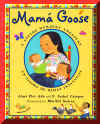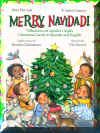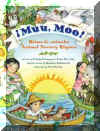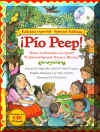 La
lagartija y el sol - The Lizard and the Sun,
Softcover, Bilingual,
Book, Alma Flor Ada,
Felipe Davalos, Rosa Zubizarreta, 2nd
Grade and Up, 9780440415312, $6.99
Watch
La
lagartija y el sol - The Lizard and the Sun,
Softcover, Bilingual,
Book, Alma Flor Ada,
Felipe Davalos, Rosa Zubizarreta, 2nd
Grade and Up, 9780440415312, $6.99
WatchAuthor : Alma Flor Ada,
Illustrator : Felipe Davalos, Translator
: Rosa Zubizarreta
2nd Grade and Up
La lagartija y el sol - The Lizard and the Sun
 La
lagartija y el sol - The Lizard and the Sun,
Softcover, Bilingual,
Book, Alma Flor Ada,
Felipe Davalos, Rosa Zubizarreta, 2nd
Grade and Up, 9780440415312, $6.99
Watch
La
lagartija y el sol - The Lizard and the Sun,
Softcover, Bilingual,
Book, Alma Flor Ada,
Felipe Davalos, Rosa Zubizarreta, 2nd
Grade and Up, 9780440415312, $6.99
Watch
$121.38 for the Bilingual Collection Green Books and CDs Set, Including 20%-Off, Free Shipping, and No Sales Tax : 5 Hardcover Bilingual Books, 4 Softcover Bilingual Books, 2 Bilingual Music CDs, and 1 Spanish Music CD
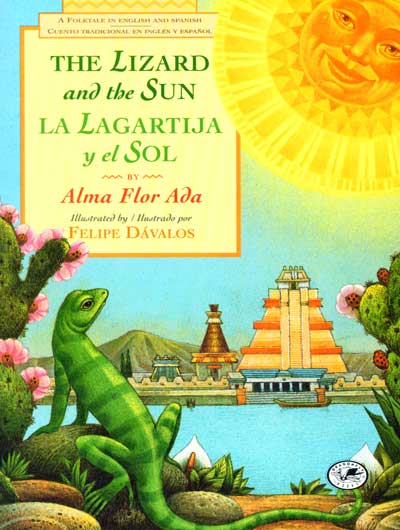 ASSOCIATION OF PARENTING MAGAZINES GOLD MEDAL
ASSOCIATION OF PARENTING MAGAZINES GOLD MEDAL
Once, a long, long time ago, the sun disappeared from the sky. Everything was dark for many days. All the animals went to search for the sun in the rivers and lakes, through the fields and forests, but the sun was nowhere to be found. Little by little all the animals gave up, except for the faithful lizard. Finally one day she found a strange glowing rock and discovered the sun fast asleep. But no one could persuade the sun to wake up. Then the emperor organized a great feast, with the finest dancers and musicians, so the sun would wake up and never fall asleep again. Since that day, all lizards love to lie in the sun, to remember the day when one of their own brought light and warmth back to the world.
Author’s Note : What a gift to have had Felipe Dávalos create the art for this story. Felipe Dávalos is a great artist and also a learned scholar. As an archaeologist he knows a great deal about the time and setting of this story. And his wonderful illustrations reflect his art and his knowledge.
 Listen to Vienna Rose read
The Lizard and the Sun to you. A marvelous example of the magical encounter
between a child and books that we wish for all children. And
here's an earlier
reading by Vienna Rose.
Listen to Vienna Rose read
The Lizard and the Sun to you. A marvelous example of the magical encounter
between a child and books that we wish for all children. And
here's an earlier
reading by Vienna Rose.
Reviews : School Library Journal : Kindergarten-Grade
3. A bilingual (English/Spanish) retelling of a Mexican folktale. When the sun
does not appear for several days in a row, everyone becomes anxious. Various
animals set off to look for it in such places as rivers, lakes, the jungle, and
even in the cone of a volcano. After searching high and low, they give up,
except for Lizard. Her faith and perseverance is rewarded when the celestial
body is found sleeping under a rock. The story emphasizes the importance of the
sun to all living creatures. The colorful double-page illustrations evoke the
native culture by featuring characters in their decorated tunics and
headdresses. In addition, the use of musical instruments such as drums
reinforces Indian culture. Readers will cheer Lizard as she finds the Earth's
source of light and warmth. An excellent choice for storyhours. Vianela Rivas,
NYPL.
Kirkus Reviews : Ada (Mediopollito/Half-Chicken, 1995, etc.) elongates a Mexican
folktale about a tenacious lizard who won't stop looking for the sun when it
disappears; D valos creates a series of half-lit, blue-toned spreads that evoke
the world of the Aztec empire. A first-person introduction explains natural
absences of the sun (behind the clouds, etc.), and prepares readers for a time,
long ago, when the sun disappeared for no reason. Animals and birds search for
it, and fail; only the lizard continues, finding a strangely glowing rock and
rushing off to the city to tell the emperor. He tells her to move the rock,
which she attempts, but the rock won't budge--once more, she's off to the city.
The emperor comes to the rock with a woodpecker, and its beak splits the rock
open, revealing a sleeping sun, who drowsily agrees to return to the sky if the
emperor will provide the liveliest musicians and dancers. So the entertainment
is arranged, and all ends well, with the inauguration of an annual feast.
English and Spanish texts appear on each spread of this pleasant tale, diluted
only by the several journeys of the lizard between rock and city, and the sun's
prolonged resistance to waking up. (Picture book/folklore. 5-8).
"Once in ancient Mexico, the sun disappeared. For days the anxious people wait for the sun to return, but it does not. When lizard discovers a rock lowing with an inner light, she tells the emperor and they awaken the sleeping sun; it returns to the sky, shedding light and warmth on all the earth. Ada retells this traditional tale with graceful language and read aloud rhythms, juxtaposing images of the tenacious, questing lizard against the darkness of jungle, marketplace, and palace. Dávalos paintings are rich with color and expression as the bright green lizard traverses the torchlit night in balanced compositions that spring to bright life with the discovery of the brilliant, sleeping sun. […]” (The Bulletin for the Center of Children’s books. October, 1997)
“[…] The Cuban-born author says she hopes the dual-language format will help awaken children’s interest in acquiring a second language, and certainly it should arouse their curiosity. Artist Felipe Dávalos, originally from Mexico, has created a colorful, exotic landscape full of pyramids, cacti and ancient Mexican sculpture and design. His illustrations beautifully capture the glowing changes as the sun shines once more. “The Lizard and the Sun” is a sumptuous introduction to the land of the Aztec and Maya.” (Bookpage. October, 1997)
“[. . .] Felipe Dávalos’s stylized double-page illustrations complement the bilingual text handsomely. Cross-hatching and speckled backgrounds add shading and texture to artfully arranged compositions that echo the city’s pyramid shapes.” (Reading Teacher, September 1998)
“ A bilingual (English/Spanish) retelling of a Mexican folktale. When the sun does not appear for several days in a row, everyone becomes anxious. Various animals set off to look for it in such places as rivers, lakes, the jungle, and even in the cone of a volcano. After searching high and low, they give up, except for Lizard. Her faith and perseverance is rewarded when the celestial body is found sleeping under a rock. The story emphasizes the importance of the sun to all living creatures. The colorful double-page illustrations evoke the native culture by featuring characters in their decorated tunics and headdresses. In addition, the use of musical instruments such as drums reinforces Indian culture. Readers will cheer Lizard as she finds the earth’s source of light and warmth. An excellent choice for story hours.” (Vanesa Rivas, NYPL, School Library Journal, August, 1997)
“Presented in both Spanish and English, this gentle traditional tale from Mexico shows how people working together can get the job done. When the sun disappears from the sky it is lizard who discovers “a rock that is shining as though it had a light inside.” Traveling to the distant city she tells the emperor who orders her to move it. But when is unable to, the emperor and the woodpecker help lizard release the reluctant sun trapped inside. The structure is different from many folktales, allowing more room for Ada’s eloquent voice. Dávalos sets the story during the time of the Aztec empire; his stylistically detailed artwork is initially veiled in midnight blue but erupts in golden yellow when the sun finally returns to the sky. According to the author’s note, Ada remembers this pourquoi story from an old reading text.” (Julie Corsaro, Booklist, December, 1997).
Literatura En Acción : La Lagartija y El Sol Por Alma Flor Ada
La historia - Esta antigua leyenda, que ocurre cuando la ciudad de Tenochtitlán era una de las más grandes del mundo, relata como una pequeña lagartija verde que no se dio por vencida logró salvar al mundo de desaparecer en la oscuridad. Las extraordinarias ilustraciones de Felipe Dávalos nos permiten participar de la vida diaria y de la magnificencia del gran imperio azteca.
Cómo se creó este libro - Las grandes civilizaciones de América son, para mí, constante motivo de admiración y orgullo. Entre sus muchas leyendas me fascinó siempre la de la lagartijita que no se dio por vencida, porque refleja tan bien el importante dicho popular que ha regido mi vida:y que ha servido de lema a los hispánicos que buscan la superación: ¡Sí se puede!. Como crecí en contacto con la naturaleza, siempre me encantaron las lagartijas que son muy abundantes en mi tierra. De niña recogía sus huevecitos y los reunía en una maceta y los observaba por horas, soñando ver aparecer las lagartijitas. Pero jamás se decidieron a salir en mi presencia, y tenía que contentarme sólo con ver los cascaroncitos vacíos. Es una alegría inmensa para mí que el Maestro Felipe Dávalos compartiera la creación de este libro. Por su formación como arqueólogo y su profundo conocimiento de esta realidad, Felipe Dávalos pudo recrear este mundo con toda exactitud a la vez que con su usual genialidad artística.
Temas, conceptos y
valores
- la vida en el Imperio azteca
- la ciudad de Tenochtitl’an
- la música
- la perseverancia o tenacidad
- la importancia de no darse por vencido
Vocabulario
- animales: jaguar, águila, liebres, venados,
ranas, sapos, pájaro carpintero
- lugares: prados, lagunas, charcos, selva, montañas,
volcanes, desierto
- conceptos: imperio, palacio, trono, emperador
- valores: constancia, perseverancia, tenacidad
Enriquecimiento cultural : La gran ciudad de Tenochtitlán, capital del Imperio Azteca, era una de las mayores y más importantes ciudades de su tiempo. Construída sobre una laguna, tenía amplios puentes, hermosos palacios y templos extraordinarios. Mucha de la comunicación se hacía en canoas. En su enorme mercado se encontraba una gran diversidad de productos alimenticios y artesanales. Los aztecas, como muchos de los pueblos indígenas de América, rendían culto al sol y hacían grandes festividades en su honor.
Para presentar este libro : Si apaga todas las luces y coloca varias velas encendidas permitirá que los alumnos tengan una experiencia similar a la descrita en el libro. Luego podrán comparar sus experiencias.
Conocimientos y
experiencias previas : Conversen sobre estos contrastes.Las respuestas variarán.
Anótelas. Contrastes :
- Luz Utilidades : Se puede ver
- Luz Desventajas : No se puede dormir
- Obscuridad Utilidades : Permite descansar
- Obscuridad Desventajas : Uno puede tropezarse
Invítelos a compartir lo que sepan sobre el imperio azteca. Aquí hay algunos ejemplos de respuestas posibles. Anote las que den los alumnos.
El imperio azteca :
¿Dónde? En el antiguo México
¿Cuándo? En el siglo XV
¿Cómo?
Vida diaria:
Cultivaban el cacao
El gobierno: Tenían un emperador y distintas castas
La educación: Tenían una escuela para jóvenes llamada “El Calmecac”
Anímelos a expresar también sus ideas y sentimientos sobre el tema.
Diálogo Creador : Estas preguntas u otras similares facilitarán un verdadero diálogo entre el texto y el lector. Así la lectura no sólo enriquecerá a los niños con nuevas visiones e ideas, sino les ayudará a reconocerse a sí mismos como protagonistas de su propia vida.
Fase descriptiva
-- Para facilitar la comprensión de la lectura
- 1. ¿Por qué estaban preocupadas las personas cuando
el sol desapareció?
- 2. ¿Cuáles fueran algunos de los animales que lo
buscaron?
- 3. ¿Por qué se dieron por vencidos?
Fase interpretativa
personal – Para relacionar el texto a las experiencias personales. Estas
comparaciones pueden validar las experiencias personales o enriquecerlas, pueden
corrobar el texto o complementarlo.
- 1. ¿Te has enfrentado alguna vez a un problema difícil?
¿Pudiste resolverlo?
- 2. ¿Has visto a alguien resolver un problema difícil
alguna vez? ¿Cómo lo hizo?
- 3. ¿Conoces a alguien que no se da por vencido¿ ¿n
qué ha perseverado esa persona?
Fase crítica/Multicultural
- Para estimular la reflexión crítica en contra de la discriminación o
los prejuicios y en favor de la justicia social y la paz.
- 1. ¿Crees que la perseverancia es importante¿ ¿Por
qué?
- 2. ¿En qué forma crees que los hispánicos hemos
perseverado en este país?
Fase transformadora - Para regresar al mundo real de los lectores, enriquecidos y fortalecidos y tomar determinaciones para acciones futuras en pro de la justicia, el bien y la paz.
Bilingual
Collection Green Books and CDs :

